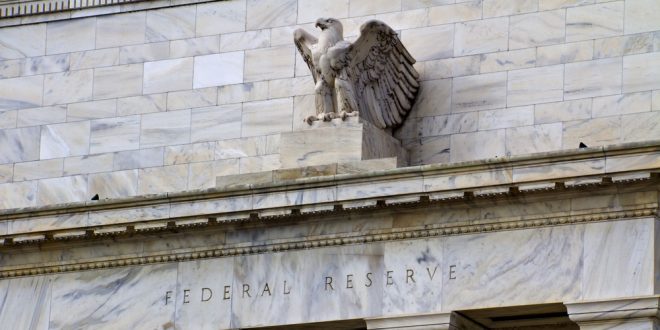The U.S. Federal Reserve on Wednesday announced that it will begin reducing its purchases of corporate assets, as the economy recovers from the coronavirus pandemic.
The Fed believes that such support measurement was needed in the midst of the recession caused by the pandemic, noting that now is time to wind it down.
Nonetheless, the Fed also noted that the corporate bond buying proved vital in restoring market functioning last year, supporting the availability of credit for large employers, and bolstering employment through the pandemic.
Currently, the U.S. central banks owns $13.7 billion worth of corporate assets, including a little over $5 billion worth of corporate bonds, as well as $8.5 billion worth of corporate bond exchange-traded funds (ETFs) holdings.
The Fed plans to begin selling these assets over time to maintain market balance.
“Portfolio sales will be gradual and orderly, and will aim to minimize the potential for any adverse impact on market functioning.”
The move marked a shift in the Fed’s stance, signaling the beginning of reducing support measures and the monetary easing policies that it adopted since the pandemic impacted the U.S. and global economies.
It is worth noting that recent remarks by the Fed officials suggested that before the central bank considers changing interest rates, it will likely begin by scaling back its massive asset purchases or the bond-buying program. A move that Chairman Jerome Powell vowed to warn the market about ahead of time to avoid any shocks to the debt market.
It is now becoming clearer that the Federal Open Market Committee (FOMC) will be discussing tapering in its upcoming meetings.
However, some Fed officials today expressed various points of view regarding the change in policy.
“We’re still quite a ways off from reaching the ‘substantial progress’ that we’re really looking for in terms of adjustments to our purchases,” President of the Federal Reserve Bank of New York, John Williams, said on Thursday.
“I just don’t think the time is now to take any action.”
“Not only is the program working exactly as designed but we have the ability to tweak it.”
Meanwhile, Federal Reserve Bank of Dallas President Robert Kaplan said that as the recovery makes progress towards its main targets of 2% inflation and full employment, it is time to begin discussing cutting support for the economy.
“I think it would be wiser sooner rather than later to begin discussions about adjusting our purchases with a view to taking the foot off the accelerator gently, gradually, so we can avoid having to depress the brake down the road.”
“When unemployment benefits run out, we’ll find a balance.”
 Noor Trends News, Technical Analysis, Educational Tools and Recommendations
Noor Trends News, Technical Analysis, Educational Tools and Recommendations





